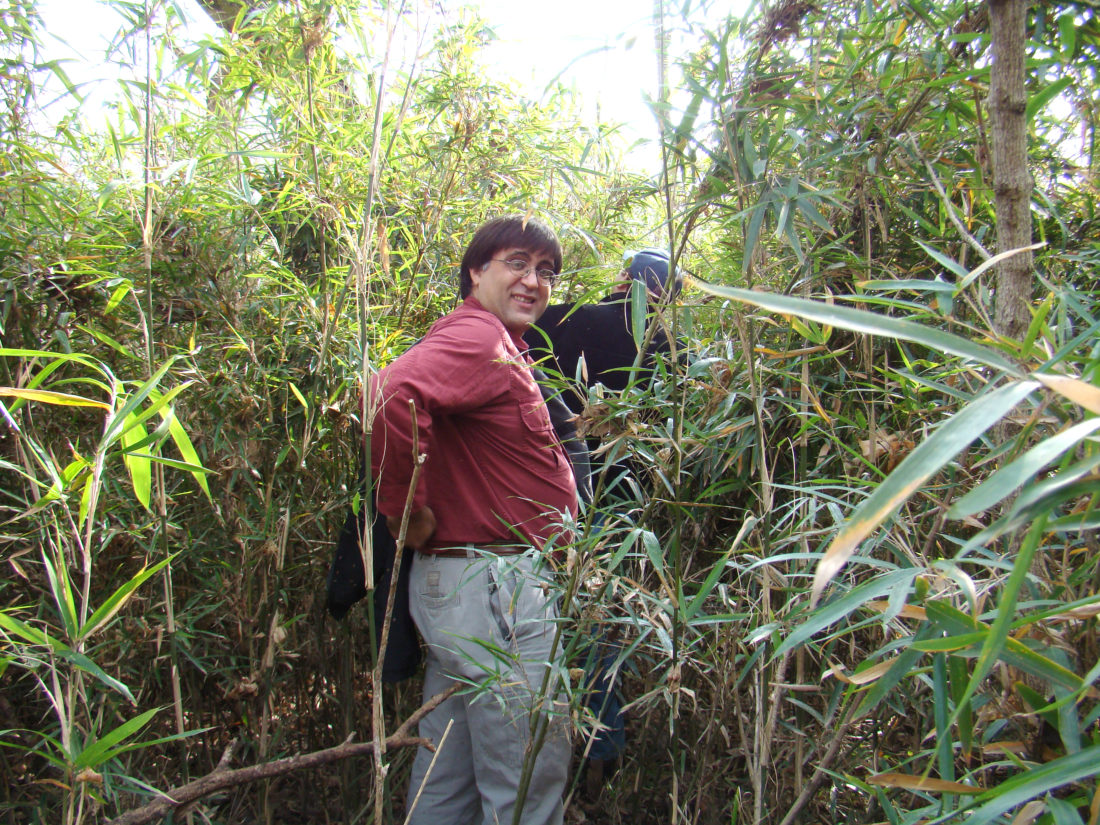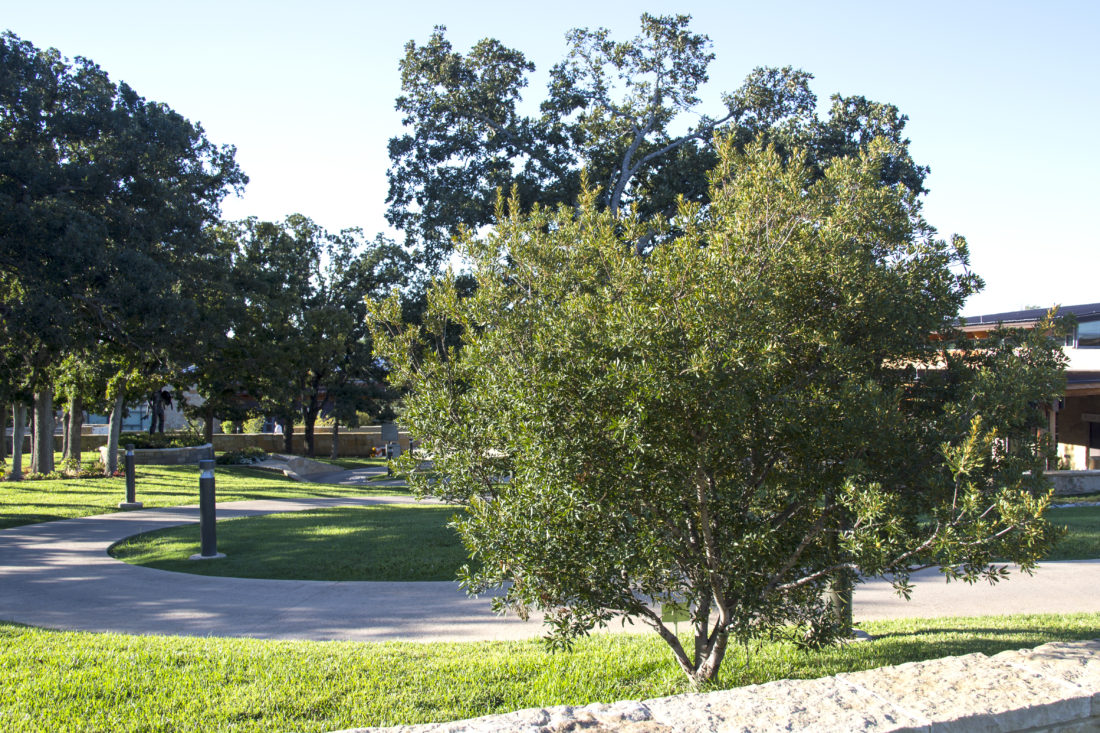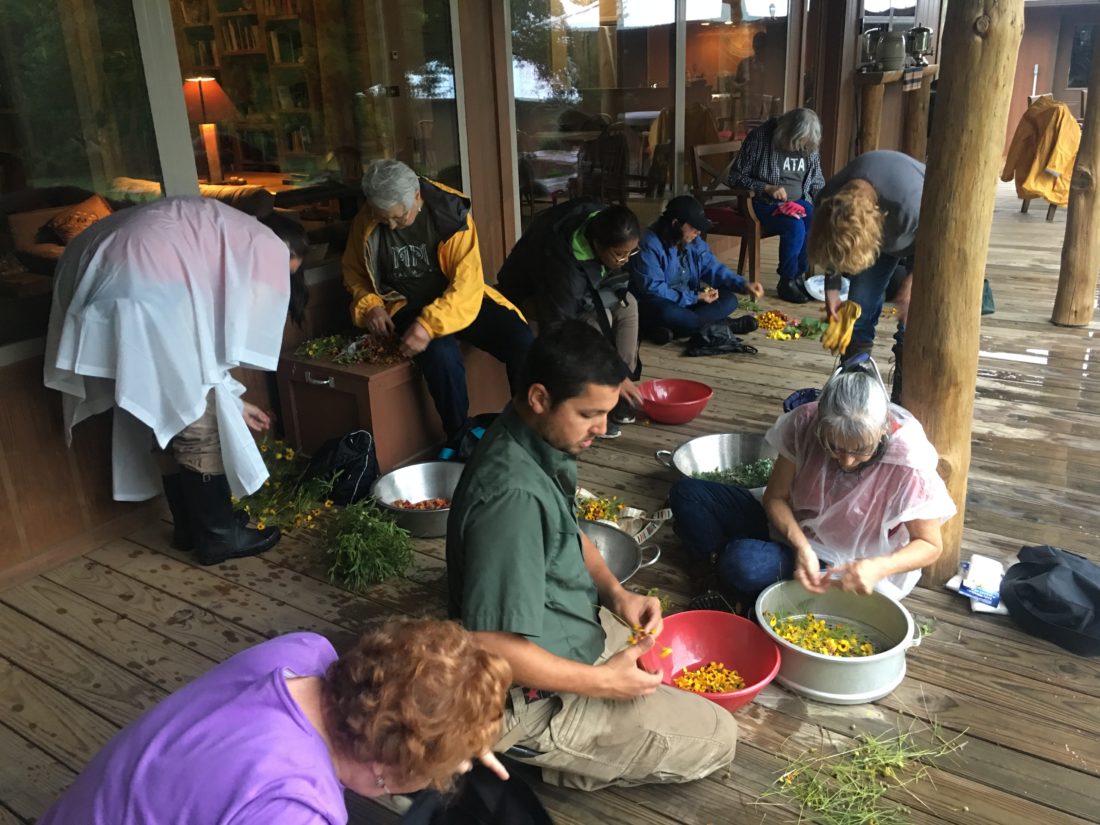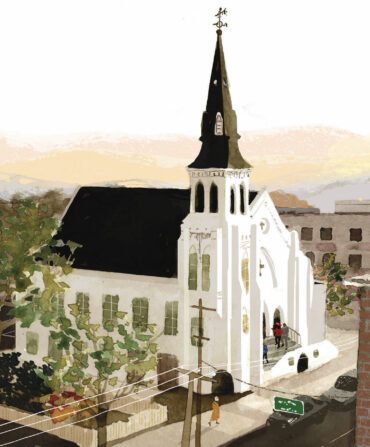Steven Bond has loved plants for as long as he can remember. “Some of my fondest memories are gardening with my great grandparents or harvesting wild onions with my Chickasaw great grandfather,” he says. Now, he’s an ethnobotanist—someone who studies and works with regional plants in the context of local cultures—in Oklahoma. At the Chickasaw Cultural Center in Sulphur (which recently reopened), Bond spent years landscaping with native plants on the 114-acre campus. Below, he shares some of the plants that hold traditional significance to the Chickasaw, who historically inhabited what is now Mississippi and Alabama. “In Oklahoma,” Bond explains, “we are in the eastern distribution of many of the species that were similar to traditionally important plants in the homelands.”
River cane
“River cane was a foundational plant for the Chickasaw,” Bond says. As the North American version of bamboo, river cane is ideal for building, and the Chickasaw used it to make flutes and weave double-lined watertight baskets, weirs for catching fish in rivers, and transport baskets for the three sisters—corn, squash, and beans, the tribe’s primary trade commodities. River cane was also suitable for making arrows to hunt deer or alligator gar, and in the springtime, its shoots are edible.

Sassafras
Sassafras grows throughout the Southeast and all the way up to Buffalo, New York. The French first documented Native Americans using its roots and leaves as a medicinal plant. “We use it as a blood thinner, and we also make it into a tea that can cool you down,” Bond explains. Europeans who colonized the Americas shipped it back home as one of the earliest trade commodities. Though Bond says you could dig it up yourself and boil the root into a tea, it’s easier to find it at a health food store or order it online.
Wax myrtle
“Wax myrtle is a gorgeous plant with waxy blue berries,” Bond says. “It’s aromatic and evergreen for most of the Southeastern coastal province.” Traditionally, the Chickasaw would have boiled down its berries to make wax, seasoned food with it, and boiled the leaves to make a tea. “It makes a gorgeous foundation for any landscape that provides texture and color year round,” adds Bond, who planted it in abundance at the Chickasaw Cultural Center.

Yaupon holly
“Yaupon holly is the furthest north species of caffeinated plants,” Bond says. “We made our version of yerba mate with it, in the form of a black tea.” As part of a cleansing ceremony, the Chickasaw would drink large amounts of the tea and then vomit it up in the morning—a ritual that Europeans observed, and which led to the plant’s scientific name of Ilex vomitoria.
Hickory trees
“We were a corn culture, yes, but also a deer culture,” Bond says. “And hickory was the tree we used to make eighty-pound draw bows which were very advantageous in the French and Indian Wars and in deer hunting.” Stickball sticks and corn pounders are other Chickasaw hickory products; the latter was three-feet tall and heavy enough to grind corn.
Bois d’arc
During his time at the Chickasaw Cultural Center, Bond and textile artist Margaret Wheeler offered classes on foraging for dye plants and then making dyes for skeins. One of the dye plants they used was bois d’arc, a small deciduous tree closely related to fig trees. (Others included juniper, various mushrooms, and even cochineal insects, used for making red dyes.) “The heartwood of bois d’arc when you boil it makes an orangey, golden dye that is color-fast, so anything you dye with it is going to maintain that wonderful color.”

Pawpaw
“During this time of year, the most coveted of things would be the elusive pawpaw,” Bond says of the fruit that ripens in late summer and early fall. “It is a sign of botanical prowess to know where they are and when to find them, because they come out so fast and other animals know they are there.” Other in-season fruits include the Chickasaw plum, a wild plum, and wild grapes, which the Chickasaw make today into grape dumplings.








